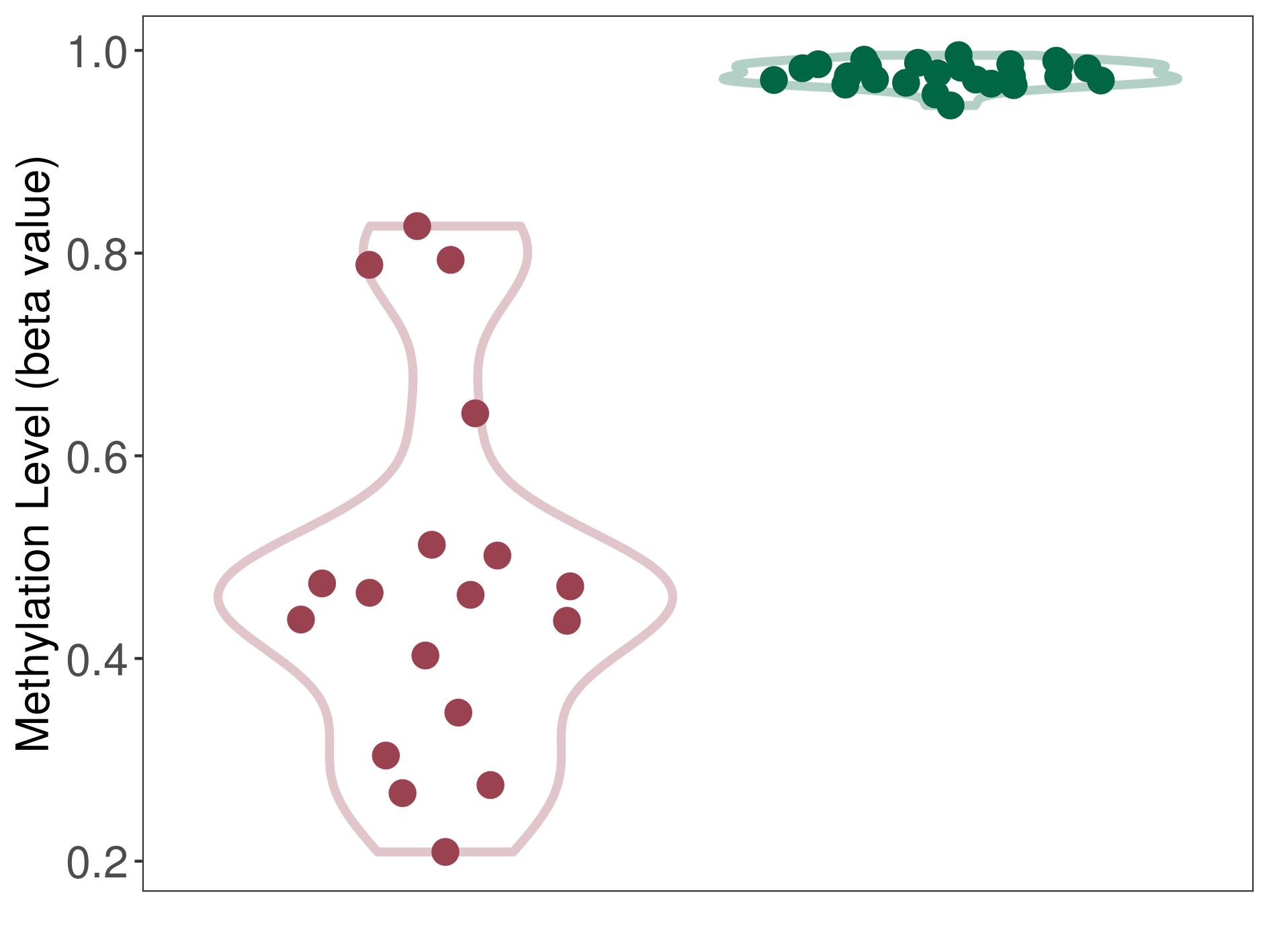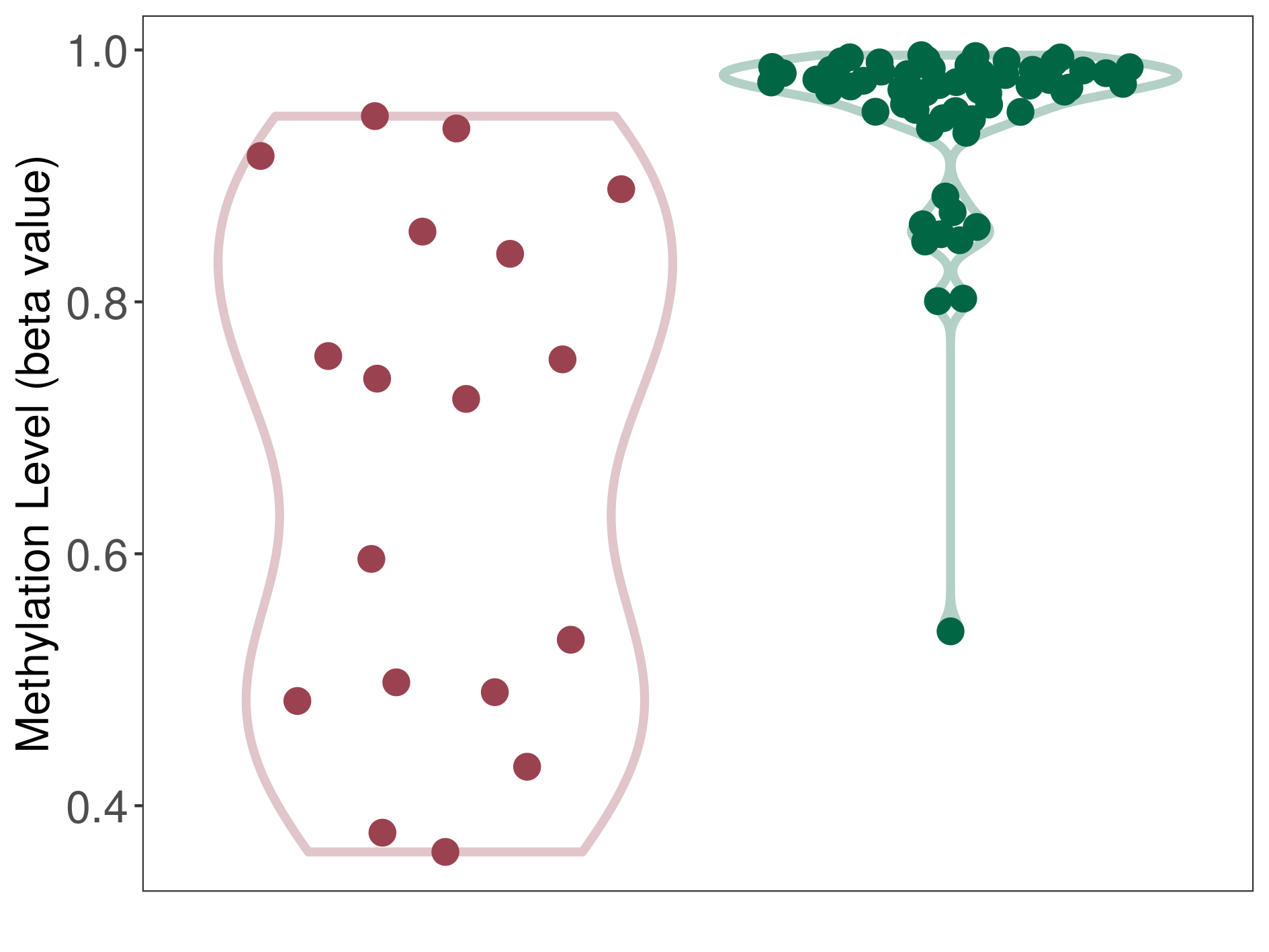Details of Host Protein-DME Interaction (HOSPPI)
| General Information of Drug-Metabolizing Enzyme (DME ID: DME0420) | |||||
|---|---|---|---|---|---|
| DME Name | Estradiol 17-beta-dehydrogenase 1 (HSD17B1), Homo sapiens | DME Info | |||
| UniProt ID | |||||
| EC Number | EC: 1.1.1.62 (Click to Show/Hide the Complete EC Tree) | ||||
| Lineage | Species: Homo sapiens (Click to Show/Hide the Complete Species Lineage) | ||||
| Interactome | |||||
| Disease Specific Interactions between Host Protein and DME (HOSPPI) | |||||
|---|---|---|---|---|---|
| ICD Disease Classification 02 Neoplasms | |||||
| ICD-11: 2A00 Brain cancer | Click to Show/Hide the Full List of HOSPPI: 1 HOSPPI | ||||
| DNA methylation | |||||
| DNA methyltransferase (DNMT) | Melanocytoma | Significant hypomethylation | |||
| Interaction Name | DNMT-HSD17B1 interaction | ||||
| The Methylation Level of Disease Section Compare with the Healthy Individual Tissue | Significant hypomethylation p-value: 1.56E-09; delta-beta: -5.11E-01 | ||||
| Description | DNA methyltransferase (DNMT) is reported to significantly hypo-methylate the HSD17B1 gene, which leads to a significantly increased expression of the drug-metabolizing enzyme Estradiol 17-beta-dehydrogenase 1. As a result, the interaction between DNMT and HSD17B1 can significantly affect the drug-metabolizing process of Estradiol 17-beta-dehydrogenase 1. | ||||
|
DME methylation in the diseased tissue of patients
DME methylation in the normal tissue of healthy individuals
|
|||||
| Violin Diagram of DME Disease-specific Methylation Level |

|
Click to View the Clearer Original Diagram | |||
| ICD-11: 2C30 Melanoma | Click to Show/Hide the Full List of HOSPPI: 1 HOSPPI | ||||
| DNA methylation | |||||
| DNA methyltransferase (DNMT) | Melanoma | Moderate hypomethylation | |||
| Interaction Name | DNMT-HSD17B1 interaction | ||||
| The Methylation Level of Disease Section Compare with the Healthy Individual Tissue | Moderate hypomethylation p-value: 2.41E-05; delta-beta: -2.41E-01 | ||||
| Description | DNA methyltransferase (DNMT) is reported to moderatly hypo-methylate the HSD17B1 gene, which leads to a moderatly increased expression of the drug-metabolizing enzyme Estradiol 17-beta-dehydrogenase 1. As a result, the interaction between DNMT and HSD17B1 can moderatly affect the drug-metabolizing process of Estradiol 17-beta-dehydrogenase 1. | ||||
|
DME methylation in the diseased tissue of patients
DME methylation in the normal tissue of healthy individuals
|
|||||
| Violin Diagram of DME Disease-specific Methylation Level |

|
Click to View the Clearer Original Diagram | |||
| ICD-11: 2C75 Placenta cancer | Click to Show/Hide the Full List of HOSPPI: 3 HOSPPI | ||||
| Transcription-factor regulation | |||||
| GATA-binding factor 3 (GATA3) | Choriocarcinoma | Repression | |||
| Uniprot ID | |||||
| Interaction Name | GATA3-HSD17B1 interaction | [1] | |||
| Studied Cell Lines | Choriocarcinoma cell line | ||||
| Ensembl ID | |||||
| Description | GATA-binding factor 3 (GATA3) is reported to repress the transcription of HSD17B1 gene, which leads to a decreased expression of the drug-metabolizing enzyme Estradiol 17-beta-dehydrogenase 1. As a result, the interaction between GATA3 and HSD17B1 can repress the drug-metabolizing process of Estradiol 17-beta-dehydrogenase 1. | ||||
| TF factor AP-2-alpha (TFAP2A) | Choriocarcinoma | Repression | |||
| Uniprot ID | |||||
| Interaction Name | TFAP2A-HSD17B1 interaction | [1] | |||
| Studied Cell Lines | Choriocarcinoma cell line | ||||
| Ensembl ID | |||||
| Description | TF factor AP-2-alpha (TFAP2A) is reported to repress the transcription of HSD17B1 gene, which leads to a decreased expression of the drug-metabolizing enzyme Estradiol 17-beta-dehydrogenase 1. As a result, the interaction between TFAP2A and HSD17B1 can repress the drug-metabolizing process of Estradiol 17-beta-dehydrogenase 1. | ||||
| Transcription factor Sp1 (SP1) | Choriocarcinoma | Activation | |||
| Uniprot ID | |||||
| Interaction Name | SP1-HSD17B1 interaction | [1] | |||
| Studied Cell Lines | Choriocarcinoma cell line | ||||
| Ensembl ID | |||||
| Description | Transcription factor Sp1 (SP1) is reported to activate the transcription of HSD17B1 gene, which leads to an increased expression of the drug-metabolizing enzyme Estradiol 17-beta-dehydrogenase 1. As a result, the interaction between SP1 and HSD17B1 can activate the drug-metabolizing process of Estradiol 17-beta-dehydrogenase 1. | ||||
| ICD Disease Classification 05 Endocrine/nutritional/metabolic diseases | |||||
| ICD-11: 5A80 Polycystic ovary syndrome | Click to Show/Hide the Full List of HOSPPI: 1 HOSPPI | ||||
| Histone modification | |||||
| Histone deacetylases (HDACs) | Polycystic ovary syndrome | Repression | |||
| Uniprot ID | |||||
| Interaction Name | HDACs-HSD17B1 interaction | [2] | |||
| Studied Cell Lines | Primary bovine theca (TC) and granulosa (GC) cells | ||||
| Description | Histone deacetylases (HDACs) are reported to deacetylate the HSD17B1 gene and thereby repress the transcriptional activity of the drug-metabolizing enzyme Estradiol 17-beta-dehydrogenase 1. As a result, the interaction between HDACs and HSD17B1 can inhibit the drug-metabolizing process of Estradiol 17-beta-dehydrogenase 1. | ||||
| ICD Disease Classification 18 Pregnancy/childbirth/the puerperium | |||||
| ICD-11: JA24 Preeclampsia | Click to Show/Hide the Full List of HOSPPI: 2 HOSPPI | ||||
| Non-coding RNA regulation | |||||
| hsa-miR-210-3p | Preeclampsia | Suppression | |||
| miRBase ID | |||||
| Interaction Name | hsa-miR-210-3p--HSD17B1 regulation | [3] | |||
| Studied Cell Lines | Preeclampsia cells | ||||
| Description | hsa-miR-210-3p is reported to suppress HSD17B1 mRNA translation by binding to the 3' untranslated region (3'UTR) of HSD17B1 mRNA, which leads to a decreased expression of the drug-metabolizing enzyme Estradiol 17-beta-dehydrogenase 1. | ||||
| hsa-miR-518c-3p | Preeclampsia | Suppression | |||
| miRBase ID | |||||
| Interaction Name | hsa-miR-518c-3p--HSD17B1 regulation | [3] | |||
| Studied Cell Lines | Preeclampsia cells | ||||
| Description | hsa-miR-518c-3p is reported to suppress HSD17B1 mRNA translation by binding to the 3' untranslated region (3'UTR) of HSD17B1 mRNA, which leads to a decreased expression of the drug-metabolizing enzyme Estradiol 17-beta-dehydrogenase 1. | ||||
If you find any error in data or bug in web service, please kindly report it to Dr. Yin and Dr. Li.

